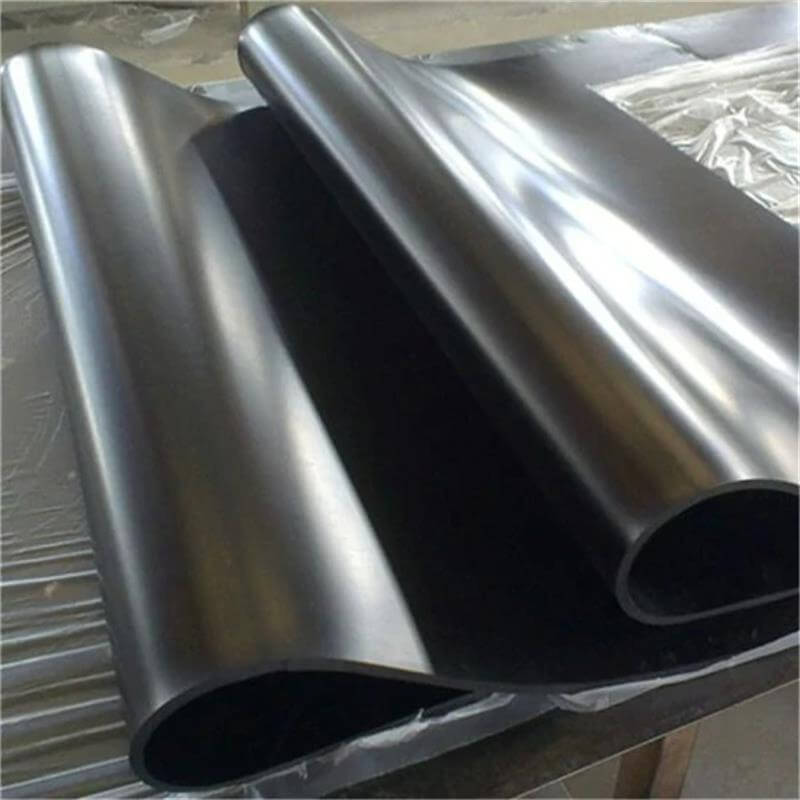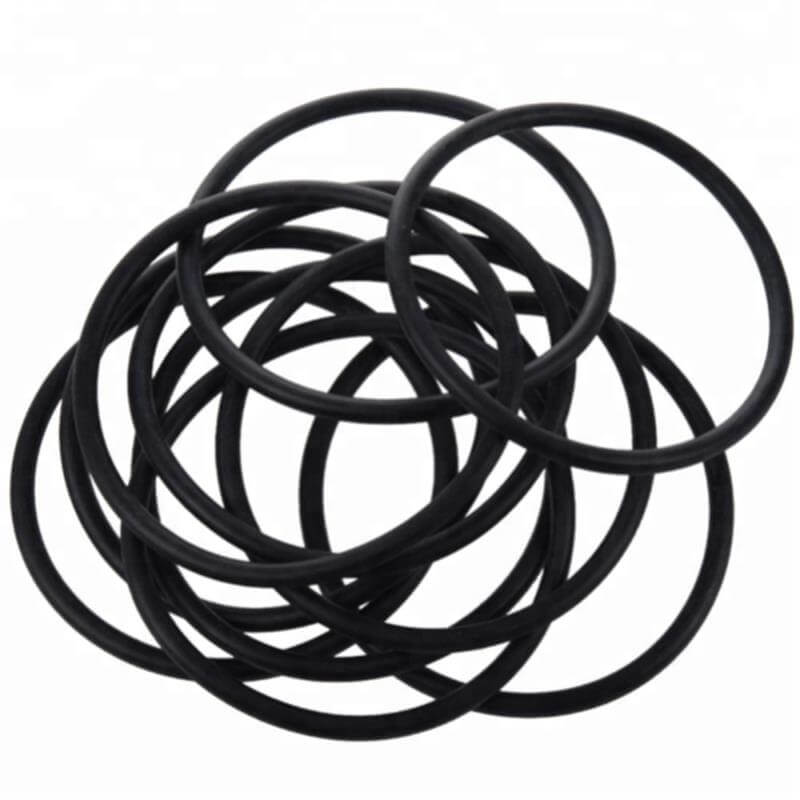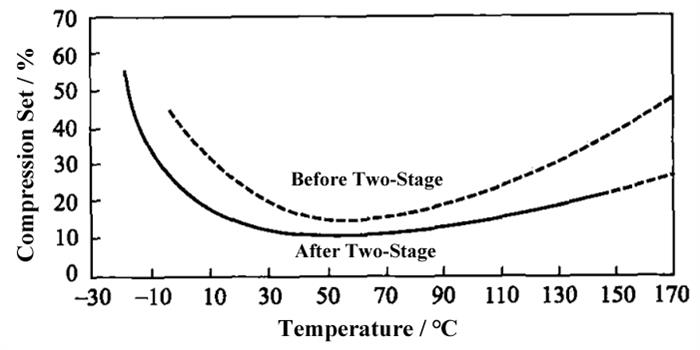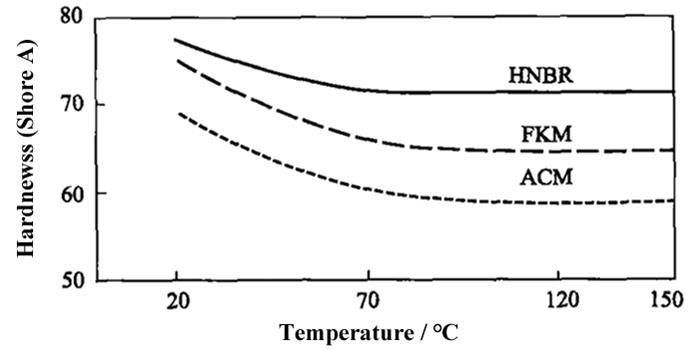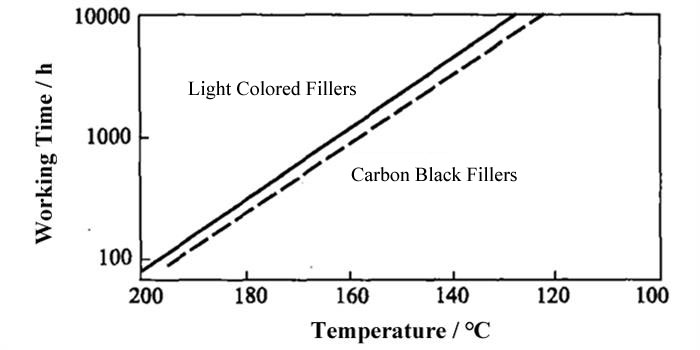HNBR rubber, also known as hydrogenated nitrile rubber, is a highly saturated elastomer obtained by special hydrogenation of nitrile butadiene rubber. The butadiene unit in the emulsion nitrile rubber is selectively hydrogenated, but the side nitrile group of the acrylonitrile unit is not hydrogenated. Hydrogenation includes homogeneous catalytic hydrogenation (solution hydrogenation method) and heterogeneous catalytic hydrogenation (emulsion hydrogenation method). Zeon Corporation is a major supplier of hydrogenated nitrile rubber raw materials.
With the development of the automobile and petroleum industry, in addition to oil resistance, rubber parts also need to have good heat resistance, high-temperature resistance, high-pressure resistance, and other characteristics. Ordinary nitrile rubber (NBR) has fallen far short of meeting these requirements. Although some of these uses have been replaced by Viton rubber, it is too expensive. HNBR rubber was developed to meet this new need.
Table of Contents
Properties of HNBR Rubber
While maintaining the original excellent oil resistance of NBR (good resistance to fuel oil, lubricating oil, and aromatic solvents), HNBR has obtained very good heat resistance due to its high saturated structure [high-temperature resistance of 150°C (130~180°C)], ozone resistance, excellent chemical resistance (good resistance to freon, acid, alkali, etc.), high compression set resistance; at the same time, hydrogenated nitrile rubber also has high strength, high tear It has the characteristics of excellent performance, wear resistance, good cold resistance (-55~-38℃), etc. It is one of the rubbers with excellent comprehensive performance.
Compression Set of HNBR Rubber
Figure 1 – The relationship between compression set and temperature
If the measurement is made at high temperature instead of room temperature, the hardness and modulus retention ability of hydrogenated nitrile rubber vulcanizate is much higher than that of other heat-resistant rubbers, such as FKM, ACM, etc. Figure 2 gives a comparison between them. These properties make hydrogenated nitrile rubber particularly suitable for making high-temperature, high-pressure seals.
Figure 2 – Effect of temperature on the hardness of HNBR rubber, FKM, and ACM vulcanizates
The life of hydrogenated nitrile rubber compounds under aging conditions can be derived from the Arrhenius curve. If the retention of elongation at break is 50% as a standard, hydrogenated nitrile rubber can work at 150 ℃ for 1000h. Compared with NBR, the operating temperature is only 120 °C. If the elongation at break is reduced to 100% as the service life standard, the working temperature of the 1000h life can reach 155℃, and the working temperature of the 10000h life is 125℃, see Figure 3.
Figure 3 – Effect of temperature on operating life (elongation reduced to 100%)
Application of HNBR Rubber
HNBR rubber is widely used in the oil field, automobile industry, and so on. HNBR reinforced with ZnO/methacrylic acid (MAA) can be used to make V-belts, isometric V-belts, bottom glue for multi-use triangle rings, vibration isolators, etc.; it can also be used to prepare sealing rings, seals, heat-resistant pipes, etc. In oil drilling, rubber products are required to withstand the test of high temperature, high pressure, acid, amine and H2S, CO2, CH4, and other vapors. And various products prepared with HNBR can resist acid, oil, and solvent. HNBR reinforced with ZnO/MAA can be used to make drilling protection boxes and pistons for mud pumps. In addition, HNBR is made into a paper gasket by beating method, which can be used as a sealing gasket in the petroleum industry and automobile industry.
The heat resistance and radiation resistance of HNBR are better than that of silicone rubber, FPM rubber, and PTFE rubber, so it is suitable for various rubber seals in power stations, hydraulic pipes, hydraulic seals, cable sheaths for power stations, printing, fabric rollers, weapon parts, aerospace seals, covering layers, fuel bags, etc.
HNBR latex can be used as a surface coating (painting), adhesive for textile, paper, leather, metal, ceramics, non-woven fibers, as well as foamed rubber, impregnated latex products, etc. In addition, the comprehensive performance of HNBR reinforced with ZnO/MAA, peroxide and high wear-resistant furnace black is better than that of ordinary HNBR.
From an economic point of view, the price of HNBR is still relatively high for the time being. At the same time, due to the low stiffness of HNBR, good process performance, and low density, more fillers can be added, and the unit volume of HNBR products is only half of that of fluorine rubber, so it will become a substitute for special elastomers such as FKM rubber.


